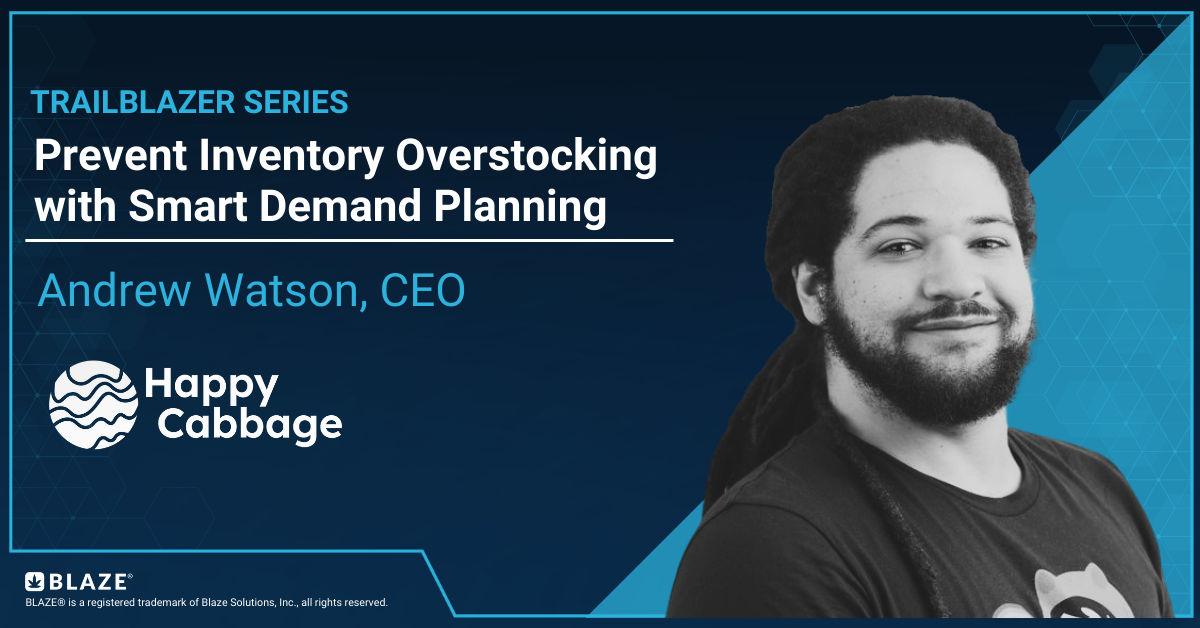
Demand planning in cannabis dispensaries can be a headache, but it doesn’t have to be. If you’re dealing with inventory issues, pricing confusion, and constant discounting, you’re not alone. A lot of dispensaries find themselves stuck in what some call the “discount doom loop” but don’t worry — there are ways out.
Too Much Weed, Not Enough Buyers
One of the biggest problems dispensaries face with demand planning is overstocking. Retailers often think a product will fly off the shelves but then it just sits there gathering dust.
The average dispensary has about 51 days worth of inventory while most aim for 14 to 30 days. When it’s time to pay distributors and the product hasn’t moved, retailers are forced to offer steep discounts just to bring in cash.
This happens because wholesalers don’t always know what’s trending. They set prices based on outdated data, and retailers mark it up 100%. But if the initial price is wrong, no amount of markup will get it to move.
On top of that, a brand might have a stellar year and decide to crank up production, pushing more products into the same number of stores. They may drop the cost per unit by 30%, but if they’re producing 100% more, the math doesn’t work out.
Growing twice as much weed doesn’t mean there are twice as many customers.
The result? Prices get slashed just to get some movement, hoping customers will buy more.
The Discount Spiral
Another issue is what we call “price compression.” When a big player in the game slashes prices, everyone else feels like they have to follow suit. Before you know it, the whole market’s drowning in discounts, and your once-premium product feels like it’s part of a clearance sale. Now you’re in a race to the bottom, trying to keep competitive with nearby dispensaries in a self-fulfilling prophecy of discount doom.
Discounting becomes a habit, and suddenly your brand’s value starts shrinking along with your profit margins. Nobody wins in this race to the bottom.
The Discount Doom Loop
This whole mess keeps feeding itself.
Wholesalers, trying to clear space for fresh harvests, push bulk discounts to retailers. Retailers, thinking they’re scoring a deal, overstock. Then, they’re stuck with too much product and forced to offer more discounts just to get rid of it. It’s a vicious cycle — nearly 20% of wholesale products are discounted in many states.
And guess who gets used to all those discounts? Customers. They start expecting deals left and right.
- In Massachusetts, the amount of sales tied to discounts jumped from 17% to 21% in a single year
- In California, discounts as a share of sales grew from 11% in 2021 to 18% in 2024
- In Colorado and Michigan, customers now enjoy an average 22% discount on every single order.
That’s a problem when your entire business model is built on making margins, not giving them away.
Breaking the Cycle: Smarter Demand Planning
Alright, let’s talk about solutions.
First off, less is more when it comes to inventory demand planning. Adopting just-in-time inventory practices can keep you from overstocking and drowning in products that take up shelf space. A little bit of scarcity keeps things moving and helps maintain your margins without constantly slashing prices.
Plus, reducing your inventory from 51 days to under 30 days can save you around $132,000 a month in wholesale costs per store.
It also helps to get smart with data. Tools that track demand in real-time (like Happy Buyers) can give you a much clearer picture of what people actually want. Instead of guessing, you’ll know what to stock and how much, which saves you from panic discounting down the road.
And don’t forget about building solid relationships with brands. If you’re always chasing short-term discount gains, you’re not doing your business any favors in the long run. Work with brands to create loyalty programs or special promotions that don’t rely on heavy discounts. Wholesalers, on the other hand, can mix things up by bundling premium products with value lines — get creative!
Clean Data In, Clean Data Out
The value of inventory and sales data is unlimited providing that the data accurately reflects the stock you carry. Without reliable data, dispensaries risk making costly mistakes that could harm their bottom line.
Ensuring your cannabis point-of-sale system has real-time tracking of sales, stock levels, and product movement is an integral part of the equation. Happy Cabbage integrates with BLAZE Retail® to analyze your purchase and inventory data to help you stock the right products and sell to the right customers.
Keep it Chill, Keep it Profitable
The cannabis market isn’t always predictable, but the problems you’re facing aren’t unsolvable. By getting smarter with how you manage inventory, using data to drive decisions, and building strong relationships with brands, you can keep things running smoothly.
Don’t let the “discount doom loop” pull you under — stay chill, plan smarter, and keep those profits rolling in.

Contributed by Andrew Watson, CEO of Happy Cabbage
Focused on Leadership, Finance, Product Development, Sales, and Client Relations, Andrew comes from an extensive background in analytics and economics. His past experiences include directing finance analytics teams at Salesforce and One Medical, supporting billion dollar P&Ls. He brings a breadth of expertise and knowledge in statistical programming and financial management. He also loves weed, black metal, Rihanna, and science fiction.




